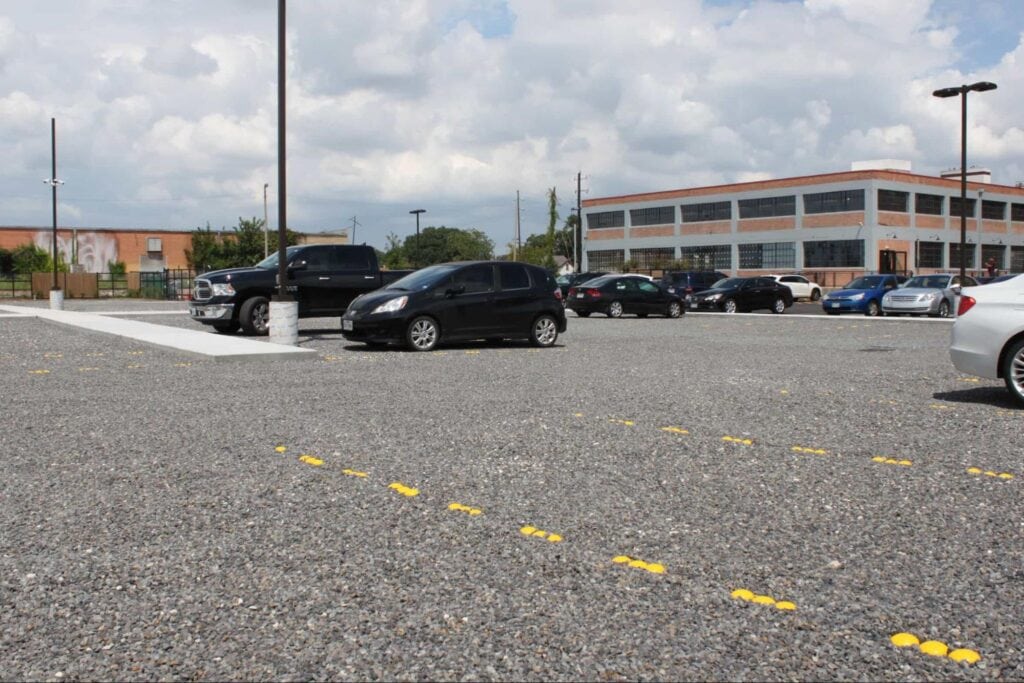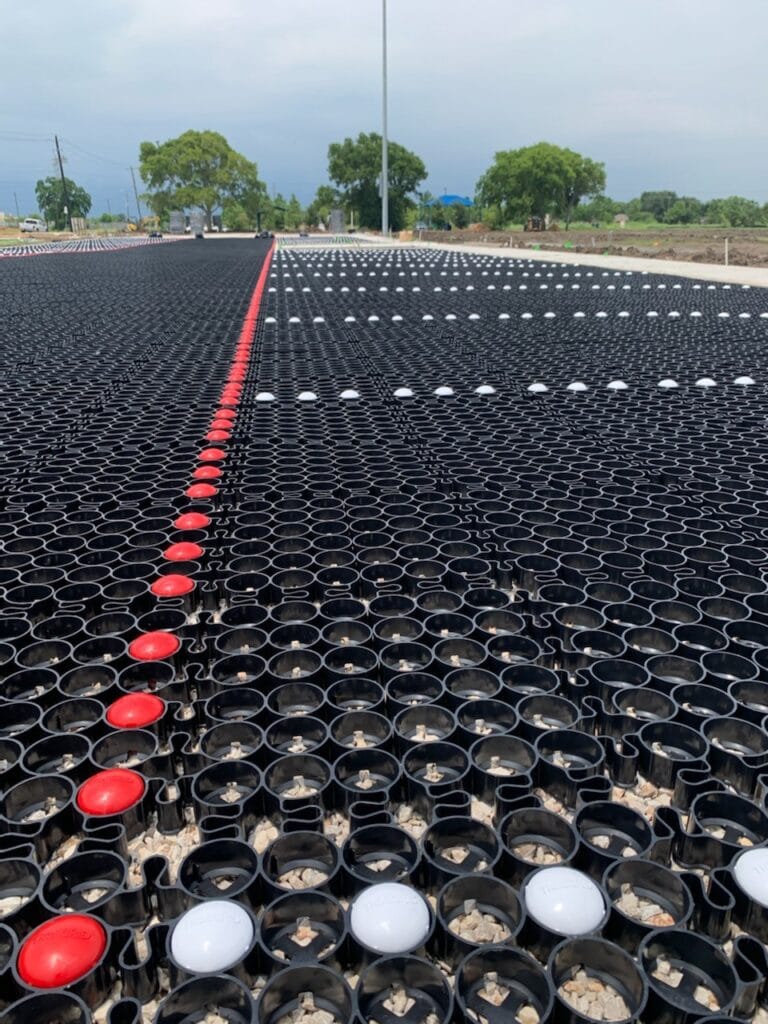Have you ever stopped to wonder how many parking spaces are required for a commercial building? Are you perhaps considering installing a parking lot outside of your commercial building, but aren’t sure how many spaces you need? These are simple questions, but the answers are a bit complicated.

A proper parking solution is vital for any commercial venture, but determining the exact number of spaces required can be a little complex. Let’s explore how you can create a parking solution that’s perfect for your business.
Why Do Commercial Buildings Need Parking Lots?
Parking lots are integral to commercial buildings. They serve as the gateway for employees, customers, and visitors. A commercial building without a properly planned parking area is like a stage without an entrance. It’s also a missed opportunity to make a strong first impression.
The necessity of parking lots extends beyond impressions. They’re a beacon of convenience, accessibility, and security. A well-lit and easy-to-navigate parking lot can attract more customers, enhance their overall experience, and ensure safety. It’s more than just an added feature for your building. It’s also a critical feature that can directly impact your business’s success.
However, the original question is one of the first you have to answer. How many parking spaces are required for a commercial building? The answer depends on a bunch of different factors and isn’t as straightforward as you might expect.
How Many Spaces Do You Need?
When calculating parking spaces, there’s a general guideline to follow. Office spaces typically need about four parking spots for every 1,000 square feet of the commercial building. It’s important to remember that this is a general rule, and the specific requirements might vary depending on your building’s location and the type of commercial activity it sees.
Understanding the concept of a parking ratio can help refine your calculation. A parking ratio is essentially a ratio of the available parking spaces to the property’s gross leasable area (GLA). For instance, a 20,000-square-foot office building with 100 parking spaces has a parking ratio of five spaces per 1,000 square feet.
Cities and municipalities often have commercial zoning ordinances that set minimum parking ratios, which can vary based on the type of commercial property. If you’re in doubt about how many parking spaces are required in your area, that’s where you should start.
Specialized Parking Spaces and Accessibility
As you plan out your commercial parking lot, you must also consider specialized parking spaces and accessibility. In fact, accessibility needs to be a priority.
Handicapped parking spaces, equipped with proper signage and located near the entrance, will help ensure that your building is accessible to all. Electric vehicle charging points, on the other hand, show foresight and a commitment to sustainability.
Special zones for delivery vehicles can help ensure smooth operations, while designated spaces for emergency responder vehicles demonstrate preparedness. Designing your parking lot is not just about providing spaces for your customers and employees. It’s also about inclusivity, sustainability, and safety.
The Downsides of Concrete Parking Lots
Concrete parking lots may seem like the go-to choice, but they aren’t without their flaws. Here are some issues to consider:
Poor Drainage
Concrete is impermeable. During a heavy rainfall, water can pool and flood your parking lot, which creates both a safety hazard and a nuisance.
Heat Absorption
Concrete absorbs and radiates heat, and it makes the ground super hot. This widespread effect across urban centers can increase local temperatures and contribute to global warming.
Maintenance
Concrete cracks and deteriorates over time, and requires regular and sometimes, expensive repairs.
Exploring Alternative Parking Lot Options
Fortunately, innovative alternatives to concrete parking lots are available. A standout option is permeable pavers.
Permeable paving systems are designed to allow water to pass through their surface, which can significantly reduce the risk of flooding and can promote groundwater recharge. Switching to a permeable parking solution is a small shift that can significantly impact the local environment and the long-term sustainability of your commercial property.
The Benefits of Permeable Pavers

The beauty of permeable pavers lies not only in their eco-friendliness, but also in their wide-ranging benefits:
Proper Drainage
Permeable pavers facilitate effective stormwater management, reduce surface runoff and prevent standing water.
Strength and Durability
Designed for resilience, permeable pavers can withstand heavy traffic and inclement weather. They’re a long-lasting solution designed for heavy use over an extended period of time, which makes them uniquely beneficial for commercial parking lots.
Affordability
Permeable parking lots are significantly less expensive than concrete parking lots, both in terms of installation and long-term maintenance.
Ease of Installation
Permeable pavers are easy to install and replace if damaged, which makes them ideal for commercial buildings.
Versatility
Permeable pavers can be seamlessly integrated with grass for landscape parking, so if you have overflow or want to turn large grassy areas into parking spaces, permeable pavers are the perfect option!

Delineation
An innovative alternative to striping for permeable pavers are SuperSpot®s and SnowSpots. These insets are long lasting, highly visible, and configurable for nearly any parking lot setting. Simply place the “spot” in an empty grid cell in place of painted stripes. TRUEGRID®’s delineators will last the life of the parking lot with no need for replacement or maintenance. SuperSpot®s are raised above the grid for use in warm climates or for high-visibility. SnowSpots, when installed, are flush level with the top of the PRO PLUS® and can be used in cold climates where snow plowing is common.
Get Permeable Pavers for Your Commercial Building Parking Lot
Calculating how many parking spaces are required for a commercial building is just the beginning. The real challenge lies in creating a parking solution that’s functional, inclusive, and sustainable. Permeable pavers are an excellent alternative to traditional concrete parking lots, that provide efficient parking and also contribute to a greener and more sustainable environment.
Ready to take the next step toward a smarter parking solution? Let’s create a parking lot that serves your needs and benefits the environment. Contact us for an estimate today!



